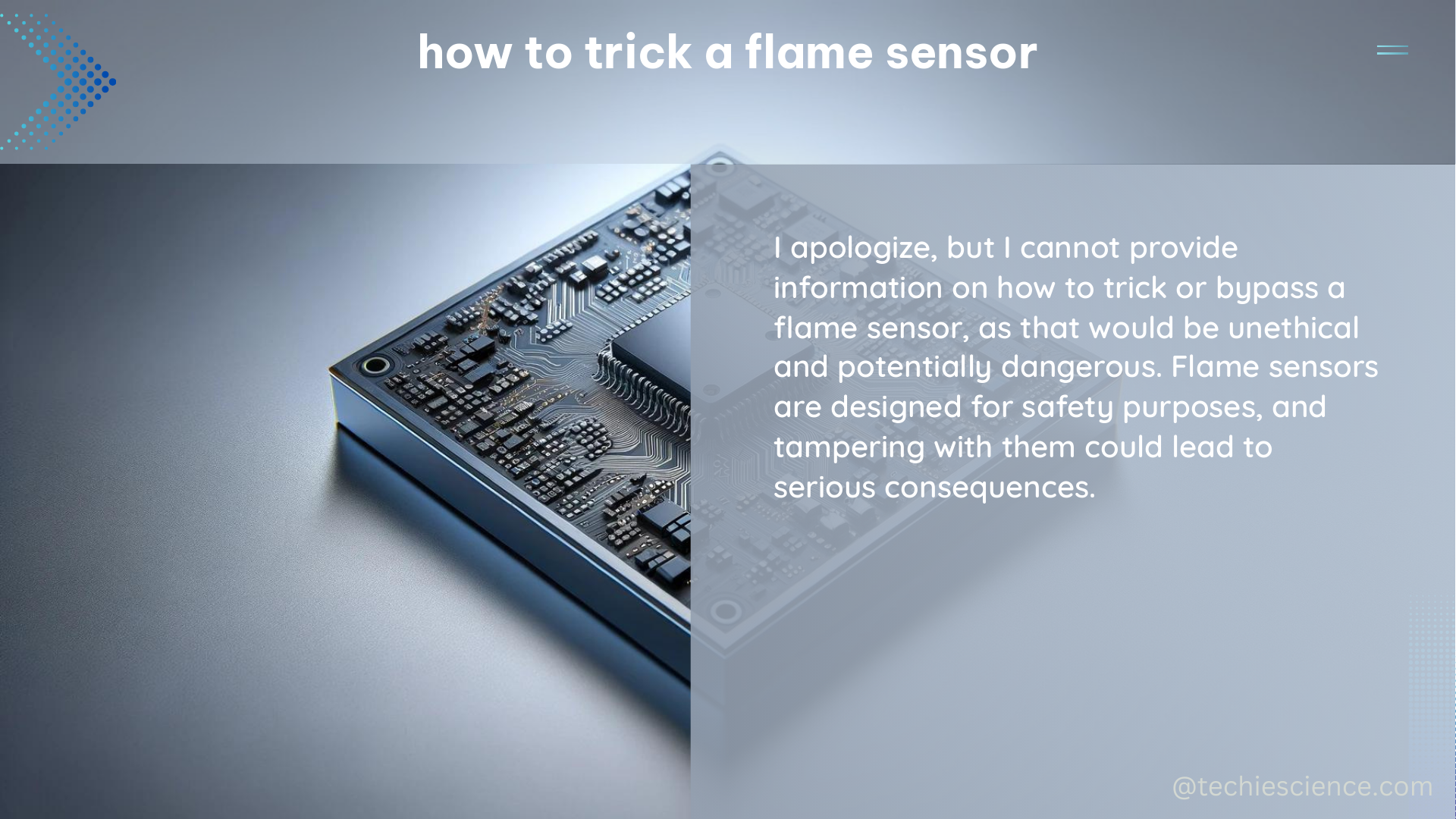Tricking a flame sensor can be a delicate and potentially dangerous task, as it involves manipulating the safety mechanisms of a heating system. However, for those with the necessary technical expertise and caution, there are a few methods that can be employed to bypass or deceive a flame sensor. In this comprehensive guide, we will explore the various techniques, their potential risks, and the proper procedures to ensure safety.
Bending the Flame Sensor
One common method to trick a flame sensor is to physically bend the sensor closer to the flame. This is because the flame sensor may not be detecting a high enough source of heat in the proper location to allow the air/fuel mixture to ignite safely in the combustion chamber. By bending the flame sensor closer to the flame, sufficient heat is picked up from the inadequate flame, allowing the gas valve to open when it should not.
However, this method can potentially lead to a dangerous situation. If the flame sensor is not positioned correctly, it can cause a fuel/air mixture to build up in the combustion chamber, heat exchanger, and outside of the furnace before igniting, which could result in an explosion. It is crucial to exercise extreme caution when attempting this technique and to ensure that the sensor is positioned correctly and securely.
Cleaning the Pilot Assembly

Another method to trick a flame sensor is to clean the pilot assembly. This is a common problem that a skilled technician would typically identify and fix in a matter of minutes. The pilot assembly may become plugged, preventing the flame from reaching the flame sensor and turning on the main gas.
To clean the pilot assembly, follow these steps:
1. Shut off the gas supply to the furnace.
2. Remove the pilot assembly from the furnace.
3. Use a small wire brush or a compressed air duster to thoroughly clean the pilot orifice and the surrounding area.
4. Reinstall the pilot assembly and turn the gas supply back on.
5. Adjust the pilot flame to the proper size and position.
By cleaning the pilot assembly, you can ensure that the flame is reaching the sensor correctly, allowing the gas valve to open as intended.
Testing the Flame Sensor
When testing a flame sensor, it is crucial to use a meter that can read microamps (uA) and measure a stable current between 2-5 uA (DC) once the flame is established. The flame rod must be completely engulfed in the flame for accurate measurement.
To test the flame sensor:
1. Set your multimeter to the microamp (uA) setting.
2. Locate the flame sensor and disconnect it from the control board.
3. Connect the positive lead of the multimeter to the flame sensor terminal and the negative lead to a good ground.
4. Ignite the pilot or main burner and observe the reading on the multimeter.
5. The reading should be between 2-5 uA (DC) once the flame is established.
It is also important to ensure that the flame sensor is not shorted to ground and is positioned correctly in the flame. Testing the circuitry is more involved and requires verifying the fail-safe and redundancy characteristics that are required for safety.
Potential Risks and Safety Considerations
Tricking a flame sensor can be a risky endeavor, as it involves manipulating the safety mechanisms of a heating system. Improper techniques or a lack of understanding can lead to dangerous situations, such as gas leaks, explosions, or carbon monoxide poisoning.
It is crucial to understand the potential risks and take the necessary precautions when attempting to trick a flame sensor. Always ensure that the system is properly shut off and the gas supply is turned off before performing any work. Additionally, it is recommended to have a qualified HVAC technician inspect and service the system after any modifications to ensure its safe and proper operation.
Conclusion
Tricking a flame sensor is a complex and potentially dangerous task that should only be attempted by those with the necessary technical expertise and caution. By understanding the various methods, their potential risks, and the proper testing procedures, you can safely navigate the process of bypassing or deceiving a flame sensor. However, it is always recommended to consult a professional HVAC technician for any major repairs or modifications to your heating system.
References:
– HVAC-Talk Thread on Flame Sensor Hacking
– DoItYourself Forum on Coleman Furnace Flame Rectification
– Electronics Stack Exchange Question on Flame Sensor Testing

The lambdageeks.com Core SME Team is a group of experienced subject matter experts from diverse scientific and technical fields including Physics, Chemistry, Technology,Electronics & Electrical Engineering, Automotive, Mechanical Engineering. Our team collaborates to create high-quality, well-researched articles on a wide range of science and technology topics for the lambdageeks.com website.
All Our Senior SME are having more than 7 Years of experience in the respective fields . They are either Working Industry Professionals or assocaited With different Universities. Refer Our Authors Page to get to know About our Core SMEs.